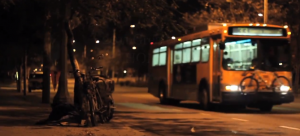
Homelessness. It’s an issue that is big in the news right now as jurisdictions across the country wrestle with the horrible problem of people living in the streets. It is especially sad when you realize the numbers of veterans and children.
The Los Angeles County Board of Supervisors is making its second big push on homelessness within the last 10 years. I think we learned a great deal in the past decade and we accomplished a great deal. Our County safety net has assisted millions of people and their families, keeping many of them out of homelessness. We have also housed thousands of people through expansion of service models that have been proven to work, such as permanent supportive housing, coordinated case management, consistent, sustained street outreach, and targeted programs and services for veterans. I am particularly proud that we established strong working relationships with cities on this issue, and I am hopeful that the new, more coordinated strategies before the Board will truly enhance what we have built.
Unfortunately, the increased numbers of homeless we are seeing are not a reflection of the intense efforts going on every day and night to identify, assist and house people on the streets. The last homeless count clearly illustrated this frustrating conundrum; despite housing more than 4000 homeless veterans in a historic effort, nearly the exact same numbers of homeless veterans were found on the streets of Los Angeles County.
Homelessness challenges our systems of care and our safety net to the absolute limit. It is forcing us to rethink all of our notions of how we create, fund and deliver services to those most in need. And to me, that’s a good thing, because many of these strategies demand collaboration and integration across all of our County departments. These strategies are also requiring us to look at how we release individuals from our jails and our hospitals, and how we can better calibrate our discharge policies towards housing and services.
Another strategy that I am particularly interested in is providing new training for law enforcement and first responders on how to approach homeless individuals and assist them. For many years, I brought together law enforcement and mental health professionals to talk about how best to engage the mentally ill and how to avoid a tragic outcome. This is as timely a subject as it gets.
Another aspect to all of this is the funding. Currently, we spend $965 million per year on services related to homelessness. A recent study by LAHSA states that we will have to identify another $1 billion over the next five years to house and serve all of the homeless that are on the streets currently.
The numbers are breathtaking, no doubt. But we are looking at ways to approach it. Frankly, we don’t have a choice. Half of the $100 million that will be appropriated this week is one-time funds. The other half is coming from County departments. Our staff estimates that implementation of these strategies will result in approximately 3,500 persons exiting homelessness and 2,000 persons prevented from becoming homeless by June 2017. For a smaller jurisdiction, that may be great, but not for the largest County in America. So, a long-term solution will be needed. A real possibility is to better leverage federal housing vouchers to house more homeless: more people than we have ever housed before. We will also be looking at the potential of new State funding to construct more housing for the homeless, to coincide with all of the new services we are rolling out.
Ten years ago, the County very publicly took on this challenge. We have been grappling with it ever since, but I believe that with these new strategies and this renewed commitment, we will see much better results a decade from now, if not sooner.
